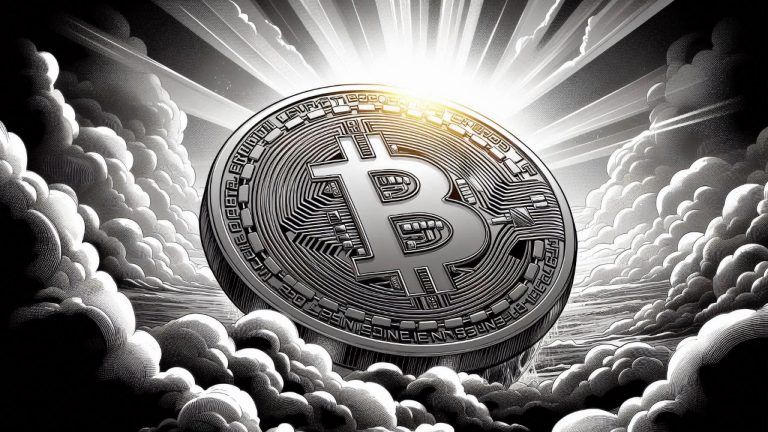 Metaplanet and SBI VC Trade have formed a strategic partnership to enhance bitcoin trading, storage, and management. This alliance aligns with Metaplanet’s “bitcoin first, bitcoin only” strategy, emphasizing BTC’s scarcity and decentralized nature. The partnership provides Metaplanet access to SBI VC Trade’s tax-efficient corporate custody services and the ability to use bitcoin as collateral, supporting […]
Metaplanet and SBI VC Trade have formed a strategic partnership to enhance bitcoin trading, storage, and management. This alliance aligns with Metaplanet’s “bitcoin first, bitcoin only” strategy, emphasizing BTC’s scarcity and decentralized nature. The partnership provides Metaplanet access to SBI VC Trade’s tax-efficient corporate custody services and the ability to use bitcoin as collateral, supporting […] Pavel Durov, founder and CEO of Telegram, has reportedly been arrested at Le Bourget airport in France under a search warrant issued by the French judicial police. The arrest follows accusations that Telegram facilitates crimes like drug trafficking and fraud due to its anonymity features. Durov faces serious charges, including terrorism and narcotics trafficking. Telegram […]
Pavel Durov, founder and CEO of Telegram, has reportedly been arrested at Le Bourget airport in France under a search warrant issued by the French judicial police. The arrest follows accusations that Telegram facilitates crimes like drug trafficking and fraud due to its anonymity features. Durov faces serious charges, including terrorism and narcotics trafficking. Telegram […] The recent announcement of the custody change of WBTC, a wrapped version of bitcoin, has prompted a negative reaction in decentralized finance (defi) protocols that reject Justin Sun’s disclosed relation with the project. Bitgo is moving WBTC custody to a joint venture with Bit Global, another custodian, to diversify custody locations and decentralize private keys […]
The recent announcement of the custody change of WBTC, a wrapped version of bitcoin, has prompted a negative reaction in decentralized finance (defi) protocols that reject Justin Sun’s disclosed relation with the project. Bitgo is moving WBTC custody to a joint venture with Bit Global, another custodian, to diversify custody locations and decentralize private keys […]

Coinbase has marked its third consecutive quarter in the black, with its net revenue and trading volumes jumping 108% and 145%, respectively, from the prior year.
Coinbase shares rose 3.2% after hours following its latest Q2 results filing — reporting $1.4 billion in revenue in Q2 along with a hefty year-on-year increase in crypto trading volumes.
The crypto exchange reported $266 million in consumer and institutional trading volumes, up from the prior year period and in line with analyst estimates, though it was a considerable drop from the $312 billion reported in Q1.
When it came to revenue, Coinbase gained the most ground from subscription and services revenue, which includes stablecoin revenue, blockchain rewards and fees. This marked a 17% increase from Q1 and nearly doubling from Q2 2023.
 Indian crypto exchange Wazirx has filed a police complaint and is pursuing legal action after a cyberattack led to a loss of over $230 million. The exchange is collaborating with global partners and authorities to trace and recover the stolen funds. Meanwhile, Liminal Custody has insisted that its platform remains secure and that all malicious […]
Indian crypto exchange Wazirx has filed a police complaint and is pursuing legal action after a cyberattack led to a loss of over $230 million. The exchange is collaborating with global partners and authorities to trace and recover the stolen funds. Meanwhile, Liminal Custody has insisted that its platform remains secure and that all malicious […]

As the TON blockchain is open-source and permissionless, individual users and projects must be careful to ensure their own safety.
The Open Network (TON), a blockchain platform integrated with Telegram, has experienced record-breaking growth in 2024. The number of onchain-activated wallets surged from approximately 1 million in January to over 9 million in June.
However, TON’s massive inflow of new users has not been overlooked by scammers. In June 2024, blockchain security firm SlowMist issued a warning on increasing phishing attacks on the TON ecosystem.
As the TON Foundation ambitiously expects to onboard 500 million users by 2028, it raises the question of how to properly protect users from attacks of all possible vectors without hindering rapid adoption.

Robinhood’s crypto services contributed to nearly 40% of the firm’s transaction-based revenue and helped the firm produce a net profit for the second straight quarter.
Robinhood CEO Vladimir Tenev described the recent Securities and Exchange Commission Wells notice as a “disappointing development” during a Q1 earnings call, as the firm posted a 224% increase in crypto trading volumes in the quarter to $36 billion.
Robinhood’s crypto-related services contributed to nearly 40% of its transaction-based revenue of $329 million, helping the firm record its second straight profitable quarter with a net income of $157 million.
But the strong quarter earnings results come in light of a Wells notice handed to the firm by the United States securities regulator last week, which targets Robinhood’s crypto listings and custodian operations.

KPMG Canada partner Kunal Bhasin says rising debt and increasing inflation have likely attracted institutional investors into crypto.
Canada-based institutional investors significantly increased their crypto exposure last year compared to the last bull run, a survey from accounting firm KPMG has revealed.
Nearly 40% of institutional investors reported having direct or indirect exposure to crypto assets in 2023 — up from 31% in KPMG’s 2021 study, the company according to an April 24 report.
KPMG received 65 responses, 31 of which identified as institutional investors with most managing more than $500 million in assets, while the remaining 34 were financial services organizations.

Deutsche Bank is set to offer customers cryptocurrency custody options through a partnership with cryptocurrency infrastructure platform Taurus.
The German bank was one of a handful of company’s to invest in a $65 million, series B fundraising round for Taurus in Feb. 2023. The company offers enterprise-grade infrastructure to issue, manage custody and trade cryptocurrencies, tokenized assets, nonfungible tokens (NFTs) and other digital assets.
According to Taurus co-founder Lamine Brahimiaurus, the partnership underwent a "thorough and very detailed" due diligence process before the German bank decided to use its infrastructure services:
"It started, end of 2021 and ended somewhere in 2022. We won the deal a couple of quarters ago."
As Cointelegraph previously reported, Deutsche Bank has been brewing plans to offer cryptocurrency custody and trading services to its clients over the past three years. The bank most recently applied for a digital asset custody license from Germany’s financial regulator BaFin in June 2023, as it continues plans to offer its customers access to cryptocurrency markets and assets.
Brahimiaurus confirmed that the agreement is global in scope, with Taurus providing custody and tokenization technology in line with local regulatory requirements.
Announcing the partnership, Deutsche Bank global securities services head Paul Maley said that cryptocurrency space is expected to grow to trillions of dollars of assets and is likely to become a priority for investors and institutions.
Meanwhile Deutsche Bank’s asset management arm DWS Group had reportedly been in discussions to invest in two different German-based cryptocurrency firms in Feb. 2023. This included crypto exchange-traded product provider Deutsche Digital Assets and market maker platform Tradias.
Deutsche Bank Singapore and Memento Blockchain recently completed a proof-of-concept called Project DAMA (Digital Assets Management Access) which allows for the management of digital funds in tokenized securities.
Founded in Switzerland in 2018, Taurus’s series B round was led by Credit Suisse and included the likes of Deutsche Bank alongside Arab Bank Switzerland, indicating major interest from traditional finance banks.
The announcement of its series B round also clearly outlined Taurus’s aim to serve “tier 1” banks in Europe. Brahimiaurus also told Cointelegraph that the platform serves close to 30 banks, with most deals going "beyond cryptocurrencies" to include tokenization of equity, debt and other products.
Deutsche Bank is set to offer customers cryptocurrency custody options through a partnership with cryptocurrency infrastructure platform Taurus.
Collect this article as an NFT to preserve this moment in history and show your support for independent journalism in the crypto space.
Magazine: The value of a legacy: Hunting down Satoshi’s Bitcoin

Traders say the record-low number of BTC held on exchanges is a bull signal, but data suggests otherwise.
Crypto analysts on X (the social media platform formerly known as Twitter) and in YouTube interviews have been abuzz with talk about the trend of Bitcoin leaving centralized exchanges.
On Aug. 29, the quantity of Bitcoin (BTC) held within exchanges saw a decline, reaching its lowest point since January 2018. While various factors might underlie this movement, experts analyzing blockchain data often interpret the shift as a positive indicator. Traders are now questioning what might have been causing Bitcoin’s inability to break above $31,000 since this price action doesn’t align with their view that fewer coins on exchanges is bullish for the BTC price.
The perspective on the decline of Bitcoin held at centralized exchanges stems from the notion that when traders withdraw their coins, it signals a bullish sentiment. This is typically associated with a strategy of holding assets in self-custody for the long haul.
Although these suppositions lack conclusive evidence, their persistence likely stems from historical precedent. However, establishing a relationship between these events and a specific cause remains elusive, regardless of the frequency of such occurrences. While buying on exchanges might necessitate depositing fiat currency beforehand, the reverse is not necessarily true.
Data from blockchain transactions displays a consistent reduction in Bitcoin deposits on exchanges since mid-May. Concurrently, Bitcoin’s price trajectory fails to offer substantial indications of a bullish upswing, with the exception of a brief surge in mid-June that coincided with BlackRock's submission of an application for a spot exchange-traded fund.

It’s worth noting that the period encompassing a 30% surge from March 12 to March 19 witnessed an increase in deposits on exchanges, contrasting the predictions of on-chain analysis. Despite this contradiction, instances of influencers addressing the weaknesses in these enduring myths are scarce. This could be attributed to the simplicity of linking deposits on exchanges to an augmented inclination for selling.
Certainly, all indicators are prone to occasional inaccuracies, and depending solely on on-chain analysis to dictate market trends is unwise. Yet, the notion that withdrawals from exchanges are predominantly earmarked for transfer to cold storage lacks substantial grounding and exists largely as a hypothetical proposition. For example, there are three possible reasons that explain reduced deposits on exchanges unrelated to a diminished short-term selling intent.
The foremost explanation for Bitcoin withdrawals from exchanges not necessarily indicating a decrease in short-term selling pressure is the burgeoning trust in custody solutions. This implies that these coins might have been acquired in the past, and only recently has the owner felt at ease moving them. Notably, reputable custodians like Prime Trust took investors by surprise when it sought Chapter 11 bankruptcy protection in Delaware due to a shortage in customer funds. Additionally, a staggering sum of approximately $35 million in crypto assets was pilfered from Atomic Wallet users in June. The prevailing lack of trust in custody solutions could elucidate the cautious approach investors adopted before initiating withdrawals from exchanges.
On June 5, the Securities and Exchange Commission launched a legal suit against Binance, alleging the offering of unregistered securities. Just a day following the Binance lawsuit, the commission turned its focus to Coinbase on analogous grounds, contending that prominent altcoins provided by the exchange meet the criteria for securities. Further compounding matters, an Aug. 2 report from Semafor disclosed that United States Justice Department officials expressed apprehensions about a Binance indictment triggering a run on the exchange, akin to the events surrounding FTX in November 2022. These regulatory actions may have influenced users’ decisions to keep their deposited coins away from exchanges, irrespective of their selling intentions, thus rendering the withdrawals unrelated to price fluctuations.
Even if one postulates that the majority of the Bitcoin departing from exchanges is indeed headed to cold wallets, implying holders have a reduced propensity to engage in short-term selling, the demand facet of the equation has encountered its own set of challenges. For instance, a search for “buy Bitcoin” on Google Trends has struggled to surpass 50% of its previous two-year peak.

Similarly, Bitcoin’s spot trading volume has averaged a modest $7 billion per day in August, representing less than half the trading activity observed between January and March.

As a result, the data underscores a waning interest from buyers, which in turn mirrors Bitcoin’s lack of bullish momentum. This parallel trend aligns with the decrease in the number of coins being deposited on exchanges. Consequently, despite Bitcoin’s exchange deposits plummeting to levels last seen in 2018, the effect on the supply-demand equilibrium is negligible, owing to the subdued trading activity that has prevailed.
Ultimately, while on-chain metric analysis might provide foundational support for the notion of coins transitioning to the possession of long-term holders, this viewpoint offers scant backing in terms of price dynamics, as the movement may reflect a broader reluctance to actively trade the asset.
This article is for general information purposes and is not intended to be and should not be taken as legal or investment advice. The views, thoughts, and opinions expressed here are the author’s alone and do not necessarily reflect or represent the views and opinions of Cointelegraph.